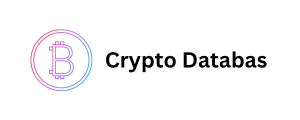In the world of Java development, Spring Framework is considered to be one of the most popular and powerful frameworks. When it comes to managing Comprehensive Guide database connections, Spring Datasource plays a crucial role. In this article, we will dive into the world of Spring Datasource, exploring its importance, features, and how it can enhance your Java application development.
What is Spring Datasource?
Spring Datasource is a key component of the Spring Framework that provides a way to configure and manage database connections. It offers a higher level brazil phone number of abstraction when compared to traditional JDBC, making it easier to work with databases in a Spring application. By using Spring Datasource, developers can benefit from connection pooling, transaction management, and other advanced features provided by the Spring Framework.
Why is Spring Datasource Important?

One of the main reasons why Spring Datasource is essential in Java development is its ability to handle database connections efficiently. Instead of Vietnam Phone Number creating and managing connections manually, developers can rely on Spring Datasource to handle this task automatically. This results in better performance, scalability, and overall reliability of the application.
Furthermore, Spring Datasource integrates seamlessly with other components of the Spring Framework, such as the ORM module (e.g., Hibernate), allowing developers to build robust and maintainable applications. By leveraging the power of Spring Datasource, developers can focus more on the business logic of their applications rather than worrying about managing low-level database operations.
How to Configure Spring Datasource?
Configuring Spring Datasource is a straightforward process that can be done either through XML configuration or Java-based configuration. In XML configuration, developers can define the datasource bean using the <bean> element, specifying the database driver, URL, username, and password. On the other hand, Java-based configuration allows for more flexibility and type safety by using annotations
Use Connection Pooling: Configure a connection pool to reuse and efficiently manage database connections, reducing overhead and improving performance.
Handle Transactions: Leverage Spring’s transaction management capabilities to ensure data integrity and consistency in your application.
Secure Credentials: Avoid hardcoding database credentials in configuration files; instead, consider using environment variables or secure storage mechanisms.
Monitor Performance: Keep an eye on datasource metrics and performance indicators to identify any potential bottlenecks or issues.
By following these best practices, you can make the most out of Spring Datasource and build robust, efficient Java applications that meet your requirements.
In conclusion, Spring Datasource is a powerful tool that streamlines database operations in Spring applications. By leveraging its features and best practices, developers can enhance the performance, scalability, and reliability of their Java applications. Whether you are a seasoned Java developer or just starting with Spring Framework, understanding and mastering Spring Datasource is essential for building top-notch applications.
“Have you experienced the benefits of using Spring Datasource in your Java applications?”
Yes, I have experienced the benefits of using Spring Datasource in my Java applications. It has made database management much simpler and efficient, allowing me to focus more on the business logic of my applications rather than dealing with low-level database operations.

